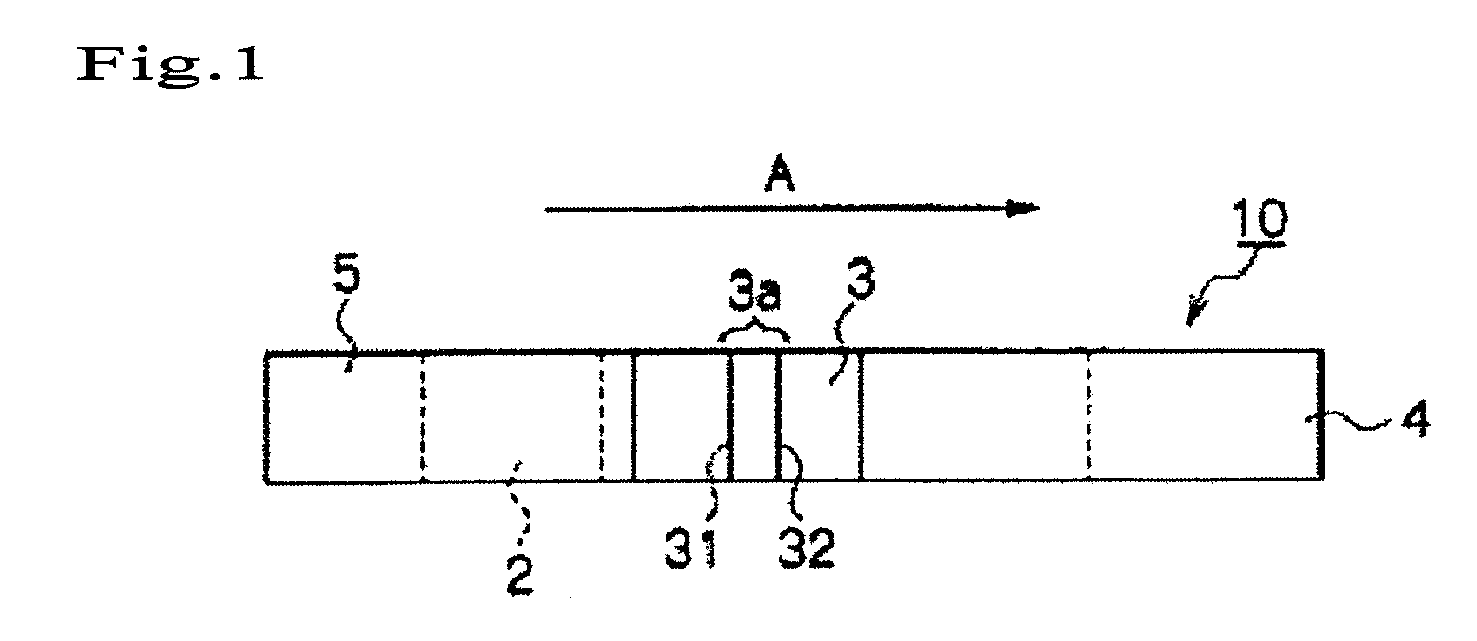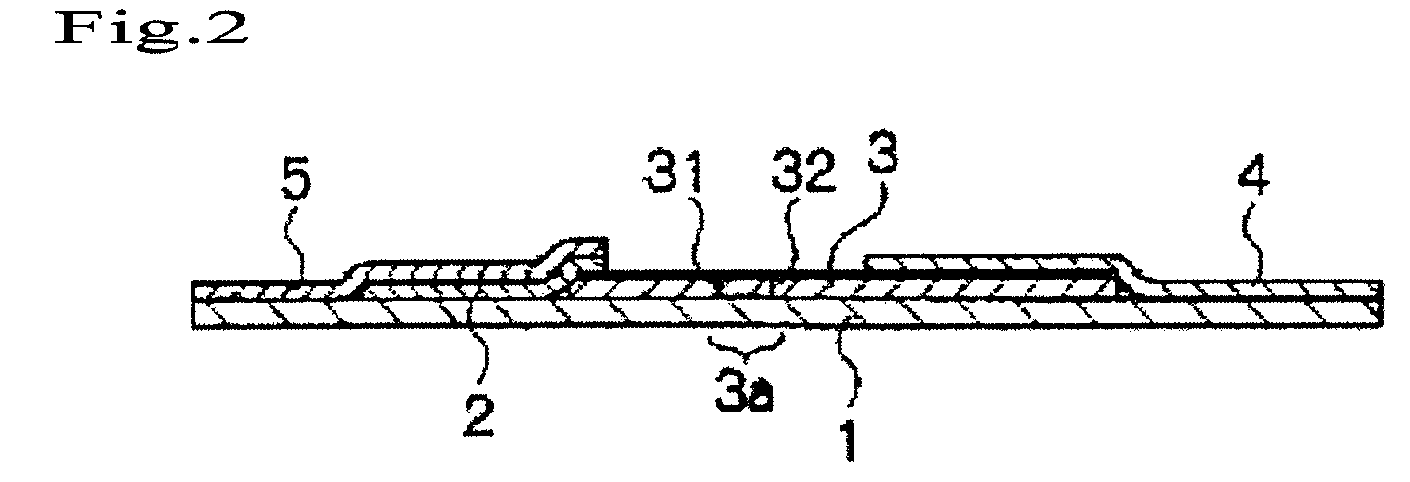Immunochromatography method using fragmented antibody
a technology of immunochromatography and antibody, which is applied in the field of immunochromatography method using labeled antibodies, can solve the problems of false positive results, insufficient suppression of non-specific adsorption by the above-mentioned blocking method, etc., and achieves clear assay results, high sensitive results, and false positive results.
- Summary
- Abstract
- Description
- Claims
- Application Information
AI Technical Summary
Benefits of technology
Problems solved by technology
Method used
Image
Examples
example 1
Preparation and Evaluation of an Influenza Kit with Antibody Density of 0.11 μg / mm2, Gold Colloid Particle Diameter of 50 nm, and F(ab′)2 Fragment as an Antibody for Gold Colloid
1. Preparation of F(ab′)2 Fragment Anti-Influenza Type A Virus Antibody
[0137]An F(ab′)2 fragment anti-influenza type A virus antibody was prepared using an anti-influenza type A virus antibody (Product No. 7307, Medix Biochemica) and an ImmunoPure® IgG1 Fab and F(ab′)2 Preparation Kit (Product No. 44880, Pierce).
2. Preparation of Kit Using F(ab′)2 Fragment Anti-Influenza Virus Antibody-Modified Gold Colloid
[0138]An antibody-modified gold colloidal (50 nm) solution was similarly prepared using type A antibody prepared in 1, as follows.
[0139]1 mL of a 170 μg / mL F(ab′)2 fragment antibody solution was added to a gold colloidal solution having pH adjusted by addition of 1 mL of a 20 mM Borax buffer (pH 8.5) to 9 mL of a 50-nm diameter gold colloidal solution (EMGC50, BBI), followed by agitation. The mixture was a...
example 2
Preparation and Evaluation of an Influenza Kit with Antibody Density of 0.005 μg / mm2, Gold Colloid Particle Diameter of 100 nm, and F(ab′)2 Fragment as an Antibody for Antibody Immobilized Membrane
[0142]1. Preparation of F(ab′)2 Fragment Antibody Immobilized Membrane (Antibody Density of 0.005 μg / mm2)
[0143]F(ab′)2 fragment anti-influenza type A antibody was prepared in the same way as in Example 1, and the concentration was adjusted to 0.7 mg / mL. Using it, an antibody immobilized membrane was prepared as in Comparative example 1 (line width of 1 mm, and antibody density of 0.005 μg / mm2).
2. Preparation and Evaluation of a Kit with F(ab′)2 Fragment Anti-Influenza Virus Antibody-Modified Gold Colloid
[0144]An immunochromatography kit was prepared in the same way as in 1, 2 and 4 of Comparative example 1, provides that F(ab′)2 fragment antibody immobilized membrane prepared in 1 of Example 2 was used. This immunochromatography kit was evaluated in the same way as in 5 and 6 of Comparativ...
example 3
Preparation and Evaluation of an Influenza Kit with Antibody Density of 1.4 μg / mm2, Gold Colloid Particle Diameter of 15 nm, and F(ab′)2 Fragment as an Antibody for Gold Colloid
1. Preparation of Kit Using F(ab′)2 Fragment Anti-Influenza Virus Antibody-Modified Gold Colloid
[0145]F(ab′)2 fragment anti-influenza virus type A antibody was prepared in the same way as in 1 of Example 1, and an antibody-modified gold colloid was prepared as follows.
[0146]1 mL of a 500 μg / mL F(ab′)2 fragment antibody solution was added to a gold colloidal solution having pH adjusted by addition of 1 mL of a 50 mM KH2PO4 buffer (pH 8.0) to 9 mL of a 15-nm diameter gold colloidal solution (EMGC15, BBI), followed by agitation. The mixture was allowed to stand for 10 minutes and then 550 μL of 1% polyethylene glycol (PEG Mw. 20000, Product No. 168-11285, Wako Pure Chemical Industries, Ltd.) aqueous solution was added to the mixture, followed by agitation. Subsequently, 1.1 mL of a 10% bovine serum albumin (BSA ...
PUM
 Login to View More
Login to View More Abstract
Description
Claims
Application Information
 Login to View More
Login to View More - R&D
- Intellectual Property
- Life Sciences
- Materials
- Tech Scout
- Unparalleled Data Quality
- Higher Quality Content
- 60% Fewer Hallucinations
Browse by: Latest US Patents, China's latest patents, Technical Efficacy Thesaurus, Application Domain, Technology Topic, Popular Technical Reports.
© 2025 PatSnap. All rights reserved.Legal|Privacy policy|Modern Slavery Act Transparency Statement|Sitemap|About US| Contact US: help@patsnap.com



